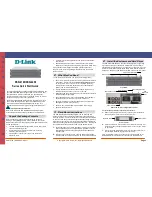
Intel® Server Board X38ML
Platform Management
Revision 1.3
Intel order number E15331-006
69
5.15.1.2
IERR Monitoring
The BMC monitors the internal error (IERR) signal from each processor and maps it to the IERR
offset of the associated processor status sensor.
5.15.2
Digital Thermal Sensor
The processor supports a digital thermal sensor that provides a relative temperature reading
defined as the number of degrees below the processor’s thermal throttling trip point, also called
the PROCHOT threshold. When a processor reaches this temperature, the processor’s
PROCHOT signal asserts, indicating one or more of the processor’s built-in Thermal Control
Circuits (TCC) has been activated to limit further increases in temperature by throttling the
processor.
The digital thermal sensor reading value is always less than or equal to zero. A reading of zero
indicates the PROCHOT threshold is reached. The reading remains at zero until the
temperature goes back below the PROCHOT threshold.
The digital thermal sensors are located on the processor Platform Environment Control Interface
(PECI) bus.
The default SDR configuration has no thresholds programmed or event generation enabled
because the sensor is expected to reach its maximum value of zero during normal operation.
5.15.2.1
PECI Interface
The platform environment control interface is a one-wire, self-clocked bus interface that
provides a communication channel between Intel processors and chipset components to the
BMC’s integrated PECI subsystem. The PECI bus communicates environment information such
as temperature between the managed components, referred to as the PECI client devices, and
the management controller, referred to as the PECI system host. The PECI standard
supersedes older methods, such as the thermal diode, for gathering thermal data.
Refer to the
Platform Environment Control Interface (PECI) Reference Firmware External
Architecture Specification
for more information about this interface standard.
5.16
Standard Fan Management
The BMC controls and monitors the system fans. Each fan is associated with a fan speed
sensor that detects fan failure and may also be associated with a fan presence sensor for hot-
swap support. For redundant fan configurations, the fan failure and presence status determines
the fan redundancy sensor state.
The system fans are divided into fan domains, each of which has a separate fan speed control
signal and a separate configurable fan control policy. A fan domain can have a set of
temperature and fan sensors associated with it. These are used to determine the current fan
domain state. A fan domain has three states: sleep, nominal, and boost. The sleep and boost
states have fixed fan speeds, although they can be configured by OEM SDRs. The nominal
state has a variable speed determined by the fan domain policy. See Section 5.16.2. An OEM
SDR record is used to configure the fan domain policy. The
Set SM Signal
command can be
















































